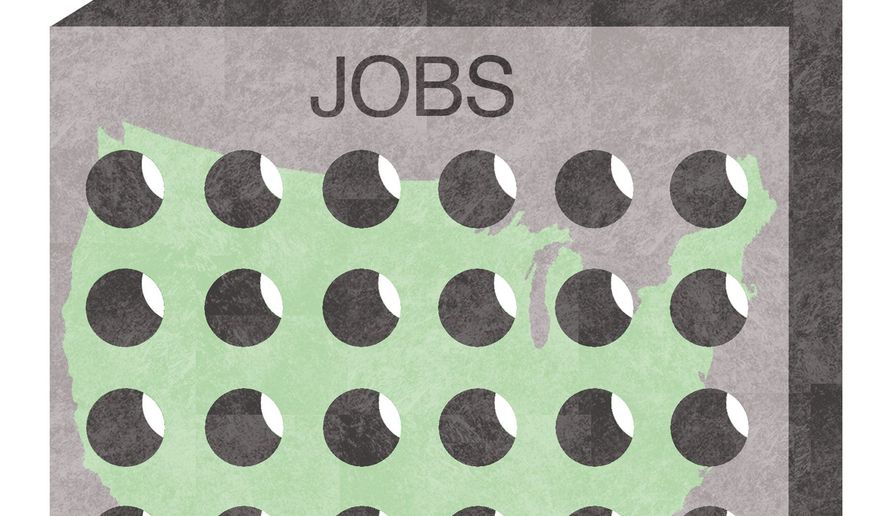
Why Trump must suspend temporary worker programs
by Steven A. CamarotaANALYSIS/OPINION:
Immigration is fundamentally a labor issue, and given the employment situation the country needs to rethink the current policy of allowing in very large numbers of foreign workers.
The April jobs report from the Bureau of Labor Statistics showed, as expected, massive losses and record high unemployment. May’s numbers are likely to be even worse because the survey data on which the unemployment figures are based reflects conditions in the earlier part of each month, while job losses continued to mount through the end of April. Several colleagues and I at the Center for Immigration Studies have analyzed the raw data from the survey and found that unemployment is especially high among immigrants.
While the foreign-born unemployment rate was roughly equal to the native-born rate before the lockdown, it is now 16.4 percent, compared to 14.0 percent for the native-born. The number of unemployed natives has increased 250 percent since February, but it has increased 320 percent among immigrants. The main reason is that immigrants are more likely to work in sectors that have felt the impact of COVID-19 the most, such as retail and hospitality.
About one-quarter of the foreign-born workers in the survey are likely to be illegal aliens. We estimate that their unemployment rate, based on their known demographic characteristics, is roughly 19 percent, compared to roughly 16 percent among legal immigrants. Perhaps most importantly, unemployment for immigrants who came to America in 2018 or later is now 18 percent. For those recent immigrants without a bachelor’s degree, unemployment is an astonishing 23 percent. If recent arrivals are struggling this much, it seems almost certain that immigrants who enter in the near future will do so as well.
Each year the U.S. welcomes about 1 million new permanent residents, all of whom are allowed to work. The State Department also issues hundreds of thousands of guest-worker visas annually, and many more people already here, such as asylum seekers and students who have finished their degrees, receive work authorization from Citizenship and Immigration Services. Continuing such a permissive system in the midst of a dramatic decline in labor demand seems unwise.
Some employers still argue that their particular sectors have a desperate need for workers. The data disagree. Among the top occupations filled by H-2B workers, a visa program the Trump administration recently expanded, the April data show that unemployment was 18 percent for landscapers and trimmers, 37 percent for maids, 21 percent for construction laborers, 9 percent for meat and food processing workers, and 35 percent for cooks and chefs.
A bipartisan group of senators are sponsoring legislation to increase the number of immigrant health care workers even though among health care practitioners, which includes doctors and nurses, the number with a job declined by about 750,000 between March and April. In health care support, which includes health care aides and nursing assistants, the number employed declined by a similar amount, and the unemployment rate is nearly 13 percent. Hospitals and clients have delayed treatment, and many patients are reluctant to see a doctor. It is hard to find any part of the economy where labor demand is booming.
Even before COVID-19, it was never clear that workers were in short supply. If a labor shortage actually existed, wages should be rising rapidly as employers try desperately to retain or attract scarce workers. Analysis by the Pew Research Center and others shows that real wages (inflation-adjusted) have stagnated for almost all workers for decades. Research by the Economic Policy Institute and my organization have found this is especially true in unskilled and semi-skilled occupations of the kind used by H-2B employers. High levels of immigration is almost certainly one of the reasons wages have stagnated.
Immigration has also likely played a role in the decades-long decline in labor force participation — the share working or looking for work — among the less-educated. This long-term decline is additional evidence that potential workers were never really in short supply.
That employers are still pushing for more immigration in the face of massive unemployment is a clear indication that their activism was never about an actual labor shortage. It was about giving them ever more leverage over workers and keeping wages down, even for the lowest paid. Congress and the president should recognize this fact and curtail immigration. The president should immediately suspend most temporary worker programs, employment-based green cards and work authorizations from within the United States.
• Steven A. Camarota is director of research at the Center for Immigration Studies in Washington, D.C.